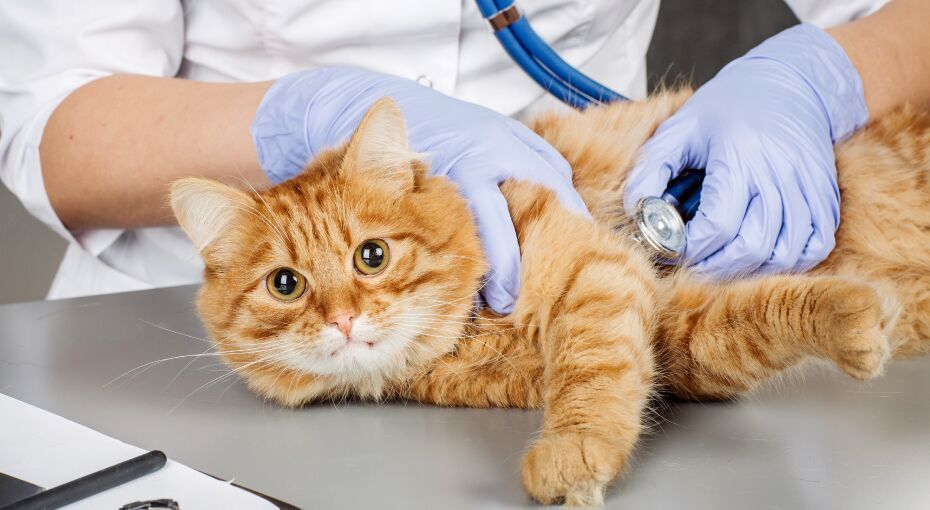Key Takeaways:
- Darting eyes in dogs can be a sign of stress or anxiety.
- Dogs may also dart their eyes due to neurological issues or visual problems.
- It is important to observe other behavioral cues and consult a veterinarian for a proper diagnosis.
- Darting eyes can indicate discomfort or pain, so it is essential to address any underlying health issues.
- Training and providing a calm environment can help reduce eye darting behavior in dogs.
Have you ever noticed your furry friend's eyes darting back and forth, as if they were following an invisible trail? It's a fascinating phenomenon that can leave us wondering what is going on in their minds. Understanding why dogs' eyes dart back and forth can provide valuable insights into their health and well-being. By delving into this subject, we can uncover the hidden messages behind these movements, gaining a deeper understanding of our canine companions. Whether it's a sign of excitement, anxiety, or a medical condition, deciphering the meaning behind these eye movements is essential for ensuring our dogs' happiness and overall health. So let's embark on this journey together and unravel the mysteries of why our dogs' eyes dart back and forth!
What does it mean when a dog's eyes move quickly from side to side?
When a dog's eyes move quickly from side to side, it is often referred to as nystagmus. Nystagmus can be a sign of various underlying issues or conditions affecting the dog's vestibular system, which controls balance and eye movement. It may indicate problems with the inner ear, brainstem, or even certain medications that affect the nervous system.
In some cases, dogs may experience temporary nystagmus due to motion sickness or disorientation. However, if the rapid eye movements persist or are accompanied by other concerning symptoms like loss of balance, head tilting, or vomiting, it is important to consult a veterinarian for further evaluation and diagnosis.
Causes of Rapid Eye Movements in Dogs:
- Inner ear infections
- Vestibular disease
- Brain tumors
- Medication side effects
- Motion sickness
Veterinary Examination:
If your dog's eyes are moving rapidly from side to side and you're worried about their health, it is best to take them to a veterinarian. The vet will perform a thorough examination and may recommend additional tests such as blood work, imaging scans (MRI or CT), or referral to a veterinary specialist depending on their findings. Early detection and treatment of any underlying condition can greatly improve your dog's prognosis and quality of life.
Why do dogs sometimes have fast eye movements?
Dogs may have fast eye movements for various reasons. One common cause is REM (rapid eye movement) sleep during which dogs dream just like humans do. During this stage of sleep, dogs' eyes may move rapidly under their closed eyelids as they experience vivid dreams.
Another reason for fast eye movements in dogs is when they are tracking or focusing on something of interest. Dogs have excellent visual tracking abilities, and their eyes can quickly move to follow moving objects or prey. This is a natural behavior for dogs and helps them navigate their environment.
Nystagmus in Dogs:
However, if the fast eye movements occur while the dog is awake and not related to dreaming or tracking, it could be a sign of nystagmus. Nystagmus can be caused by various factors such as inner ear problems, neurological conditions, or certain medications. If you notice persistent abnormal eye movements in your dog while they are awake, it is advisable to consult a veterinarian for further evaluation and appropriate treatment.
Are there specific reasons for my dog's eyes moving back and forth?
If your dog's eyes are moving back and forth (oscillating) rapidly, it could indicate a condition called horizontal pendular nystagmus. This type of nystagmus often suggests an issue with the dog's vestibular system or brainstem.
Specific causes of horizontal pendular nystagmus in dogs may include inner ear infections, head trauma, exposure to toxins, or congenital abnormalities. It is essential to have your dog evaluated by a veterinarian to determine the underlying cause and provide appropriate treatment.
Vestibular System:
The vestibular system plays a crucial role in maintaining balance and coordinating eye movements. When there is an imbalance or dysfunction within this system, it can result in abnormal eye movements like horizontal pendular nystagmus.
Treatment Options:
The treatment for your dog's oscillating eye movements will depend on the underlying cause. In some cases, medication may be prescribed to alleviate symptoms and manage any associated discomfort. Physical therapy exercises and environmental modifications can also help dogs with vestibular issues regain their balance and reduce eye movements.
Can stress or anxiety cause a dog's eyes to move rapidly?
Yes, stress or anxiety can potentially cause a dog's eyes to move rapidly. When dogs experience high levels of stress or anxiety, their sympathetic nervous system is activated, leading to physiological changes in their body, including increased heart rate and altered breathing patterns.
These physiological changes can also affect the dog's eyes, causing them to dilate or move rapidly. It is important to note that rapid eye movements due to stress or anxiety are typically short-lived and should subside once the dog's stress levels decrease.
Signs of Stress in Dogs:
- Panting
- Pacing
- Trembling
- Excessive drooling
- Restlessness
Managing Stress in Dogs:
If you notice your dog's eyes moving rapidly due to stress or anxiety, it is crucial to identify and address the underlying cause of their distress. Providing a calm and safe environment for your dog, engaging in regular exercise and mental stimulation activities, and using positive reinforcement training techniques can help reduce their overall stress levels. If necessary, consult with a professional dog trainer or behaviorist for additional guidance.
Are there any medical conditions that make a dog's eyes dart back and forth?
Yes, there are medical conditions that can cause a dog's eyes to dart back and forth involuntarily. One such condition is called saccadic oscillations, which refers to rapid and involuntary back-and-forth eye movements.
Saccadic oscillations can be caused by various factors, including neurological disorders, brainstem lesions, or certain medications. It is essential to have your dog examined by a veterinarian to determine the underlying cause and provide appropriate treatment if necessary.
Neurological Disorders:
Neurological disorders affecting the dog's brain or nerves can disrupt the normal control of eye movements, leading to involuntary darting motions. Conditions such as cerebellar hypoplasia (underdeveloped cerebellum) or progressive retinal atrophy (degenerative eye disease) can also contribute to abnormal eye movements in dogs.
Treatment Options:
The treatment for your dog's darting eye movements will depend on the specific diagnosis made by a veterinarian. In some cases, medication or surgical interventions may be recommended to manage the underlying condition and alleviate symptoms. Regular veterinary check-ups and adherence to prescribed treatment plans are crucial for monitoring your dog's progress and overall well-being.
How can I help my dog if their eyes are constantly moving side to side?
If your dog's eyes are constantly moving side to side, it is important to seek veterinary assistance for a proper diagnosis and appropriate treatment. While you wait for your veterinary appointment, there are a few things you can do at home to help make your dog more comfortable:
Create a Calm Environment:
Avoid loud noises and excessive activity around your dog as it may worsen their symptoms. Provide a quiet space where they can rest comfortably without additional stressors.
Prevent Hazards:
Ensure that the area where your dog spends most of their time is free from sharp objects or obstacles that could potentially harm them if their balance is affected.
Assist with Mobility:
If your dog is having difficulty maintaining balance, you can use a towel as a sling to support their hind end while they walk. This can help stabilize them and prevent falls.
Avoid Rapid Movements:
When interacting with your dog, try to move slowly and avoid sudden changes in direction or quick movements that may disorient them further.
When should I be worried about my dog's eye movements and seek veterinary help?
You should be concerned about your dog's eye movements and seek veterinary help if:
The Eye Movements are Persistent:
If your dog's eye movements continue for an extended period without improvement, it is important to have them evaluated by a veterinarian. Persistent abnormal eye movements can indicate underlying health issues that require medical attention.
Other Symptoms are Present:
If the eye movements are accompanied by other concerning symptoms such as loss of balance, head tilting, vomiting, or changes in behavior, it is crucial to consult a veterinarian promptly. These signs may indicate more significant problems that need immediate attention.
The Eye Movements are Sudden and Severe:
If your dog experiences sudden and severe eye movements that appear distressing or cause them pain, it is essential to seek emergency veterinary care. This could be indicative of a serious condition requiring immediate intervention.
Your Gut Instinct Tells You Something Is Wrong:
As a pet owner, you know your dog best. If you have a gut feeling that something is not right with their eye movements or overall well-being, trust your instincts and reach out to a veterinarian for guidance. It is always better to err on the side of caution when it comes to your furry friend's health.
In conclusion, if you notice your dog's eyes darting back and forth, it could be a sign of various health issues. It is important to consult a veterinarian to determine the cause and provide appropriate treatment for your furry friend.
How long does dog nystagmus last?
In dogs with nystagmus caused by idiopathic vestibular disease, improvement typically occurs within one to two weeks. Nystagmus may resolve on its own within a few weeks. However, if the underlying cause is not addressed, the symptoms may persist.
What are abnormal eye movements in dogs?
Nystagmus, which is the involuntary movement of the eyes in dogs, is often associated with an abnormal vestibular system. This condition is characterized by rapid eye movements in different directions. Obtain a pet insurance quote in under a minute!
What is nystagmus eye movement in dogs?
Nystagmus is a term used to describe rapid and involuntary eye movements. In some situations, such movements are considered normal, such as when a dog is looking out of a car window or when their head is being moved from side to side. However, if a dog's eyes are flickering when their head is still, it may indicate an abnormal condition.
How do you treat nystagmus in dogs?
To treat Nystagmus in dogs, antibiotics will be prescribed if it is caused by an infection. If it is due to hypothyroidism, addressing the metabolic condition should resolve the vestibular problem. If polyps or tumors are present, surgery will be necessary.
What condition causes eyes to move back and forth rapidly?
Nystagmus is a medical condition characterized by involuntary, rapid, and repetitive movements of the eyes. These movements can occur in various directions, including up and down, side to side, or in a circular motion. This condition was first described on November 16, 2021.
Is nystagmus an emergency in dogs?
Veterinarians view this condition as a concerning indication of the pet's nervous system. Animals with nystagmus require immediate medical care.

















